There is certainly a reason, why Basler carnival is referred to as the three most beautiful days (“drey scheenschte Dääg). Basler Fasnacht is the most famous and the largest carnival in Switzerland (and as Baslers love to break the rules – it starts after Ash Wednesday). It lasts 3 days, the city is filled with music, masked Cliquen and Gässle. The räppli create a rainbow carpet you walk on and the city is in full celebration for exactly 72 hours, with many bars remain open the whole time. Fasnacht unites locals, despite their beliefs or political views and I already heard so many love stories that started on Fasnacht – my neighbours and some of my friends’ parents met during the celebrations – it only proves how truly magical and beautiful this event is. Below I’m sharing a list of things to do during Fasnacht. Hope it will help you celebrate the Basel Carnival to the fullest.
Go to the Morgenstraich
The Fasnacht starts with its spectacular Morgenstraich – at 4:00 on Monday morning the lights go out everywhere in the city and the drum majors shout “Attention! Morgenstraich! Forward, march!” and from that moment the city of Basel enters in a state of emergency that last exactly 72 hours until its Ändstreich at 4:00 on Wednesday. Where to watch the Morgenstraich? Somewhere around the Martkplatz I would say! If you’re planning to go, be aware of the changes in the public transport schedules. More info on that in the official BVB flyer HERE.
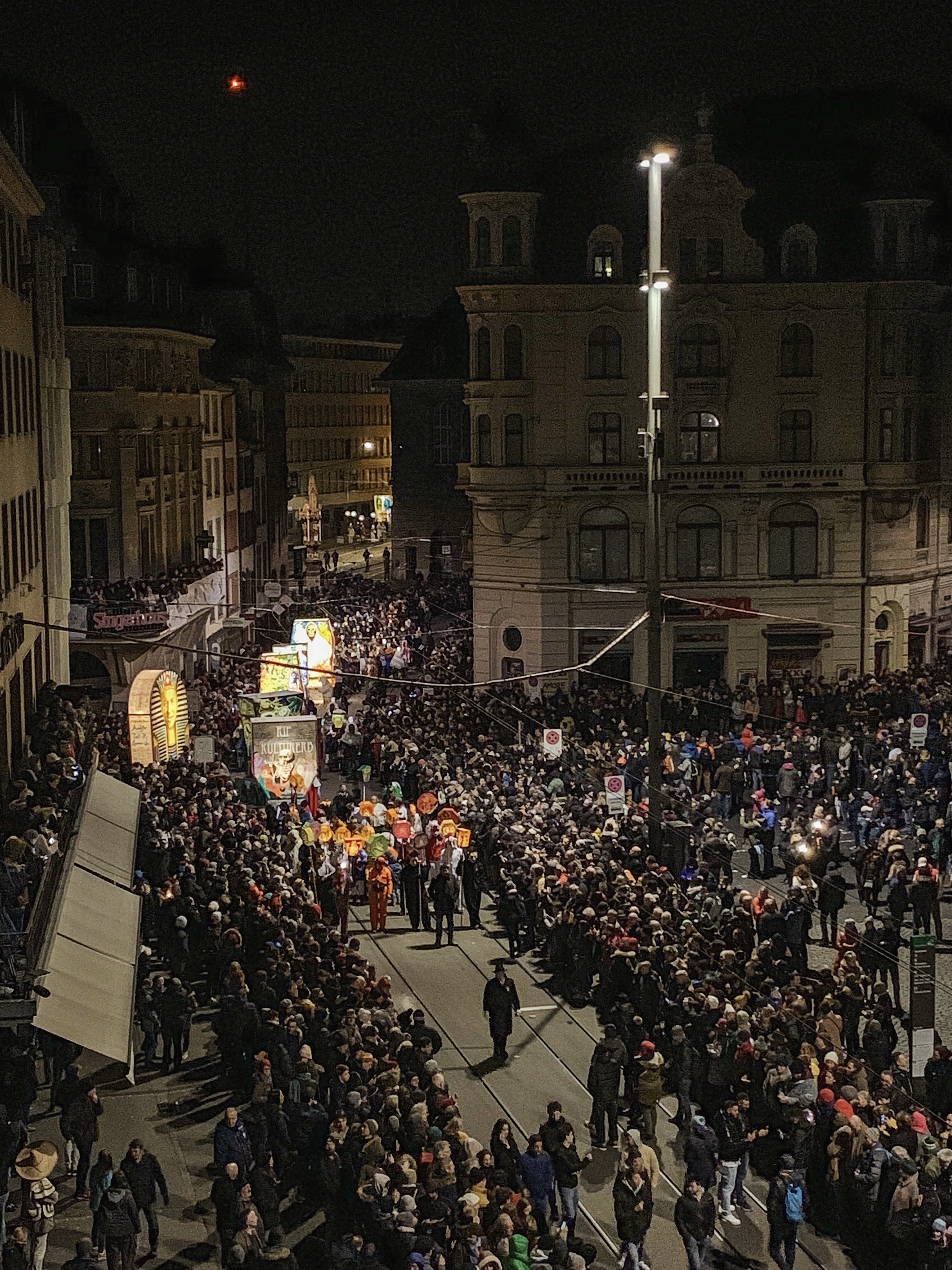
Try some of the Fasnacht specialties
If you want to experience Fasnacht like a local, you need to try the Carnival specialties! What to eat?
Fastenwähe (on the photo below) – a seasonal buttery pastry shaped like a pretzel sprinkled with caraway seeds. You’ll find them in most of the bakeries around the carnival time, eat them as a snack or for breakfast.
Fasnachtschüechli – another seasonal specialties: pastry made from eggs mixed with cream and flour, baked in boiling fat until crisp. They are very thin and dusted with icing sugar. Another must-try!
Mehlsuppe (flour soup) – dark soup made from roasted flour, usually served with grated cheese on top. Pair it with a Zwiebel- or Käsewähe, a popular quiche that is also often eaten around this time of the year.

Go to the Wäägeli-Parade
This year’s big carnival parade (Cortege) has been cancelled due to Coronavirus, but you can still enjoy its essence at the Wäägeli-Parade. Instead of the big wagons, there will be carriages and oranges, sweets and mimosa flowers distributed to children and adults. The Parade starts on Monday at 13:30 at the Bäumleingasse and follows the following route: Freie Strasse –> Marktplatz –> Gebergasse –> Marktplatz.
Visit a Cliquekeller
During Fasnacht many of the Cliques open up their social rooms to the general public, to enjoy less expensive drinks and food than in most restaurants and bars. These places are often in cellars (hence the name), many of them can be found in the alleys on the hill between the University and Marktplatz. Check for colorful Fasnacht lanterns above the doors. My tip: After a beer or two, be courageous and practice your Baseldytsch with the locals, you’ll get to know a bit of Basel that is normally closed to tourists. You can find a list of Cliquenkeller in the app “Källerabstiig” Here are a few examples:
Baimli (Bäumleingasse 11)
Zer alte Dante (Gebergässlein 30)
Breo-Clique (Bäumleingasse 13)
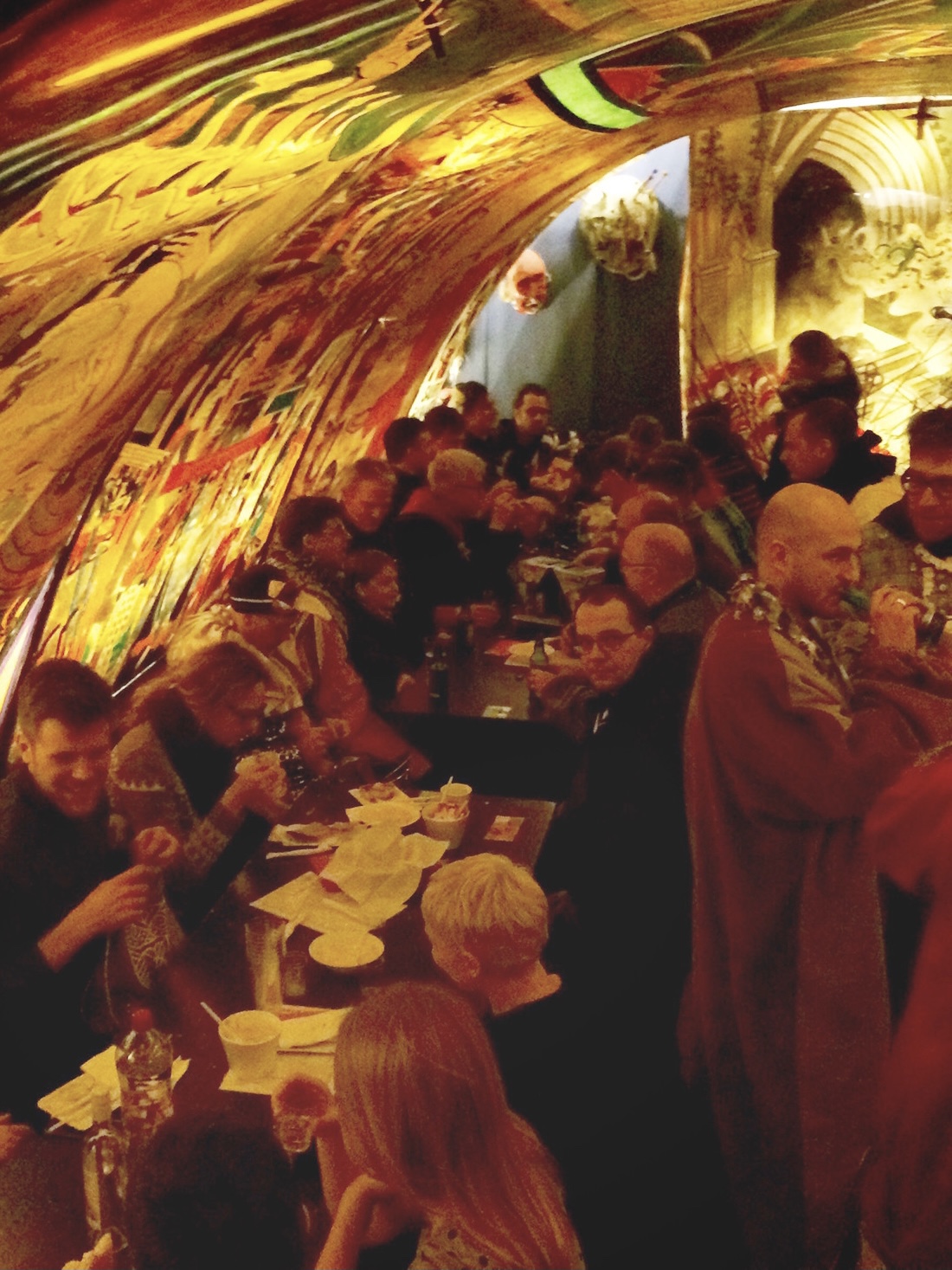
Find the Gässle and enjoy the music
All is the Gässle – wandering through the narrow alleyways. Masked individuals and groups roam through the streets of the old city, playing pipes and drums, with spectators marching behind them. It’s not a challenge to find them, because they are usually all over the place, but they really make the atmosphere!
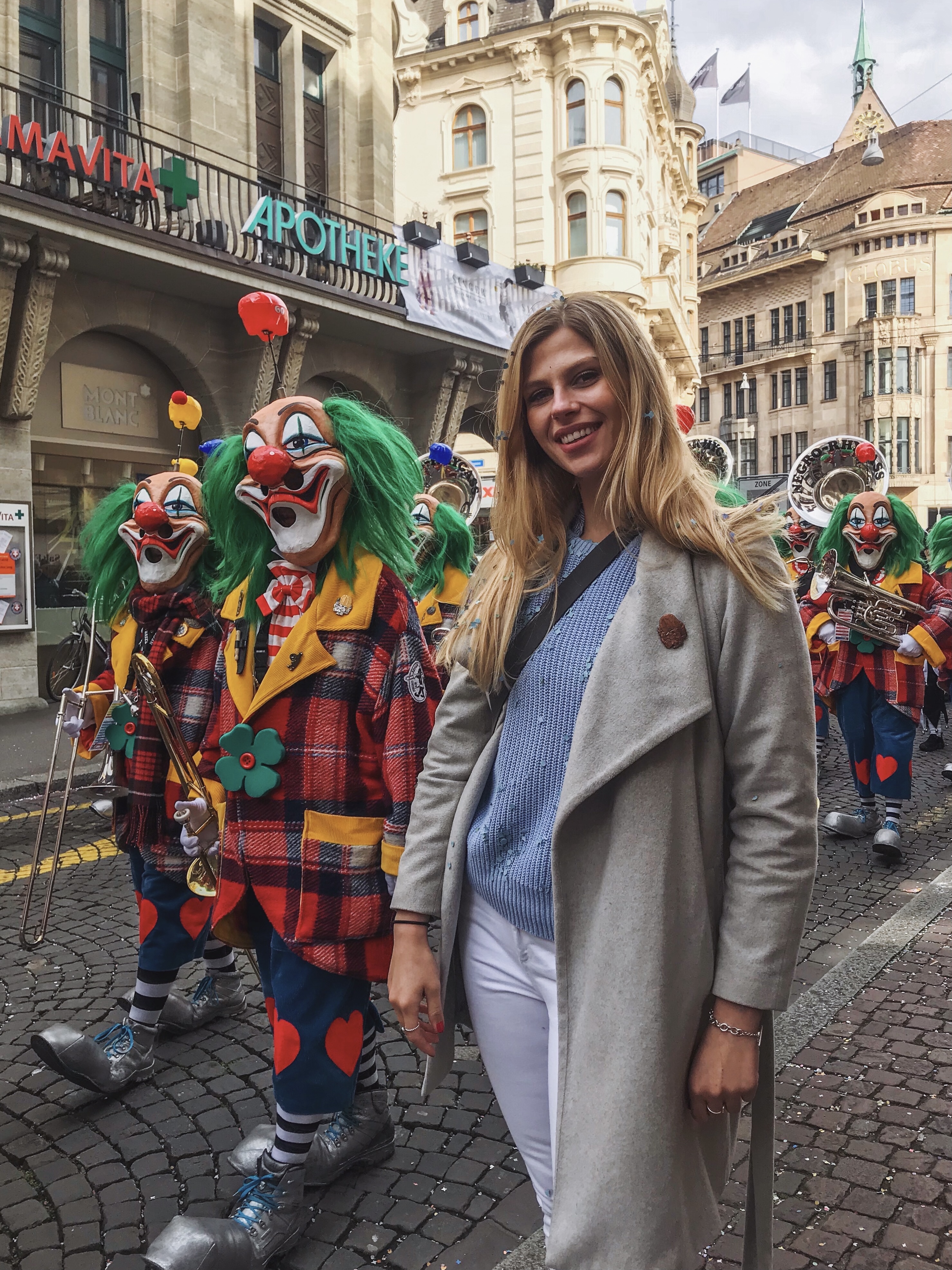
Go to the Kinderfasnacht if you have kids!
Second day of the Fasnacht definitely belongs to the little ones. In small groups, “Binggis” (children) practise the carnival traditions. Dressed in imaginative costumes and equipped with musical instruments they wander through the streets, distributing “Zeedel” (witty leaflets they wrote themselves), sweets and Räppli.
Visit the Lantern Exhibition at Munsterplatz
After the parade on Monday afternoon, the cliques display their elaborately designed lanterns on the Münsterplatz. They come in many forms and styles and often are used as a tool to mirror the injustices and current problems of our world. Over the last decades they developed into a true art historical digest.
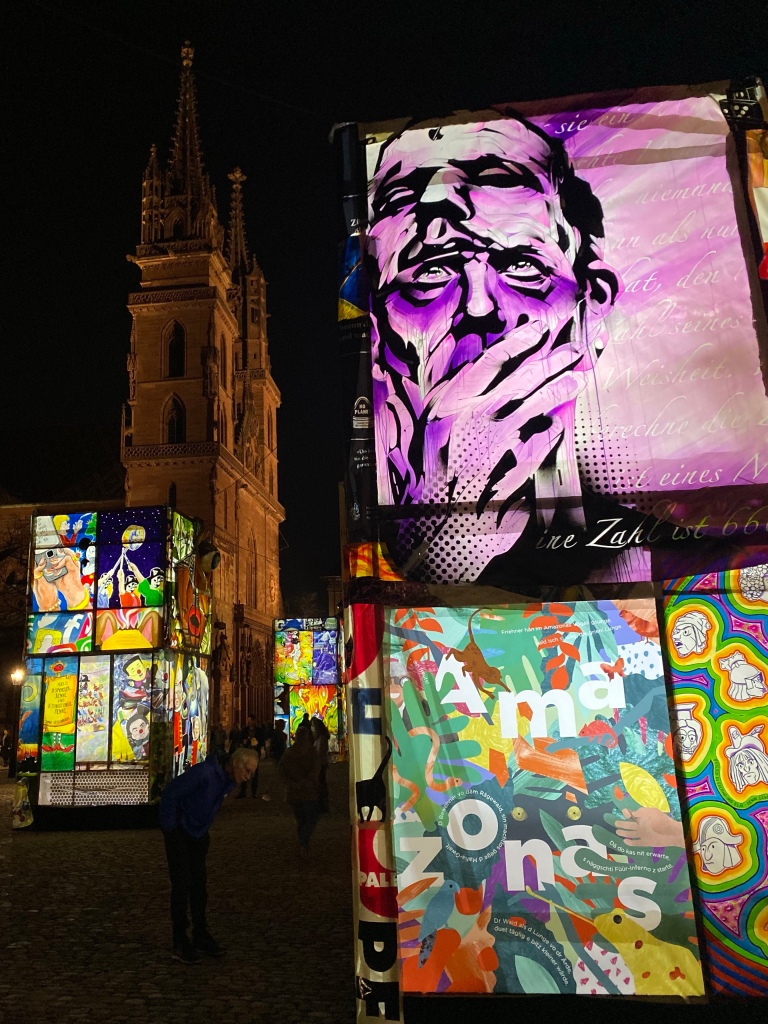
Go to the Guggenkonzert
On Tuesday evening, the town is in the hands of the Guggenmusik bands. A part of the roughly 60 brass bands equipped with music instruments are giving concerts to the public throughout the city of Basel. It’s one of my fav parts of the Fasnacht to be honest, so make sure you see it! Below you’ll find the details of the concerts that are planned this year:
- Tuesday, 8.03.22 between 20.00 and 23.00
“Clara-Monschter” on the Claraplatz - Tuesday, 8.03.22, from18.30 to 20.30
“Sternenmarsch” (Messeplatz – Clarastrasse – Greifengasse – Marktplatz – Gerbergasse – Barfüsserplatz)
Experience the Schnitzelbangg!
In case you don’t know, Schnitzelbank is a collection of short verses that are performed as songs and intended to amuse the audience. Each verse deals with a different theme: politics, sport, economics and society that made the headlines during the past year.
Schnitzelbänggler perform at the Restaurants and Cliquen-Keller, e.g.: Kohlmanns, Löwenzorn, Volkshaus. The tickets are usually sold out quickly, but they can also be viewed spontaniously, because some of them visit Restaurants and Cinquekeller while wandering around the town.
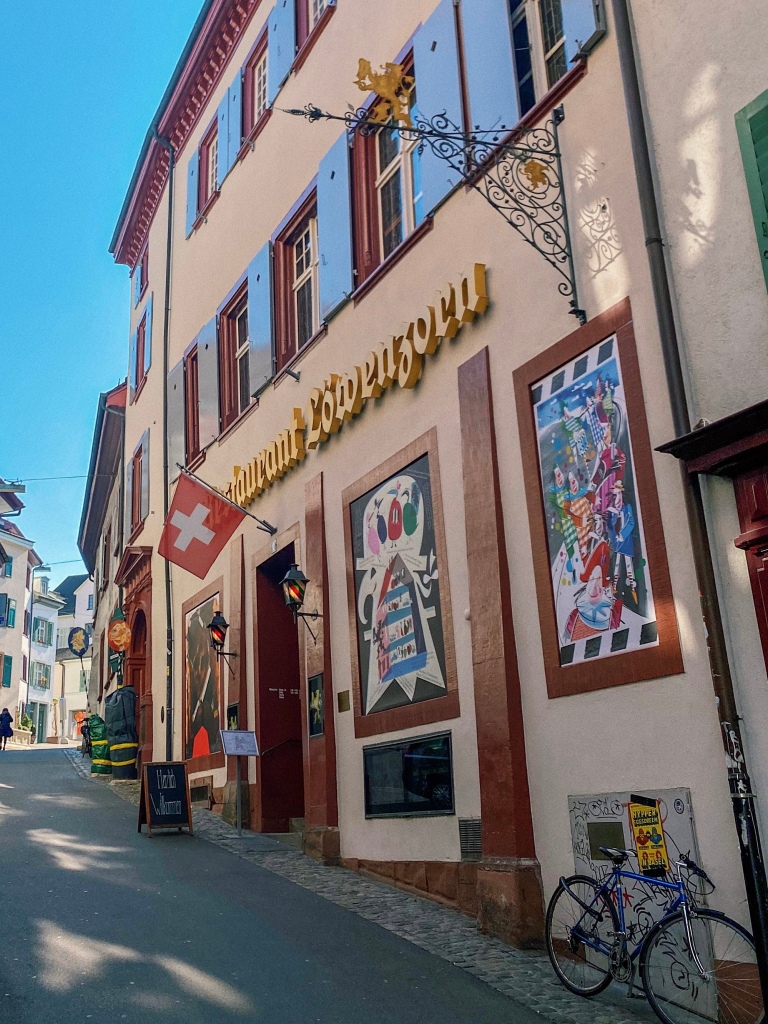
Get showered in Räppli and just enjoy!
Hope this little guide helps you guy to plan your Fasnacht time. And to avoid being showered with Rappli too much – make sure you buy a badge before and wear it visibly :). When in Basel, do as the Baslers do :))
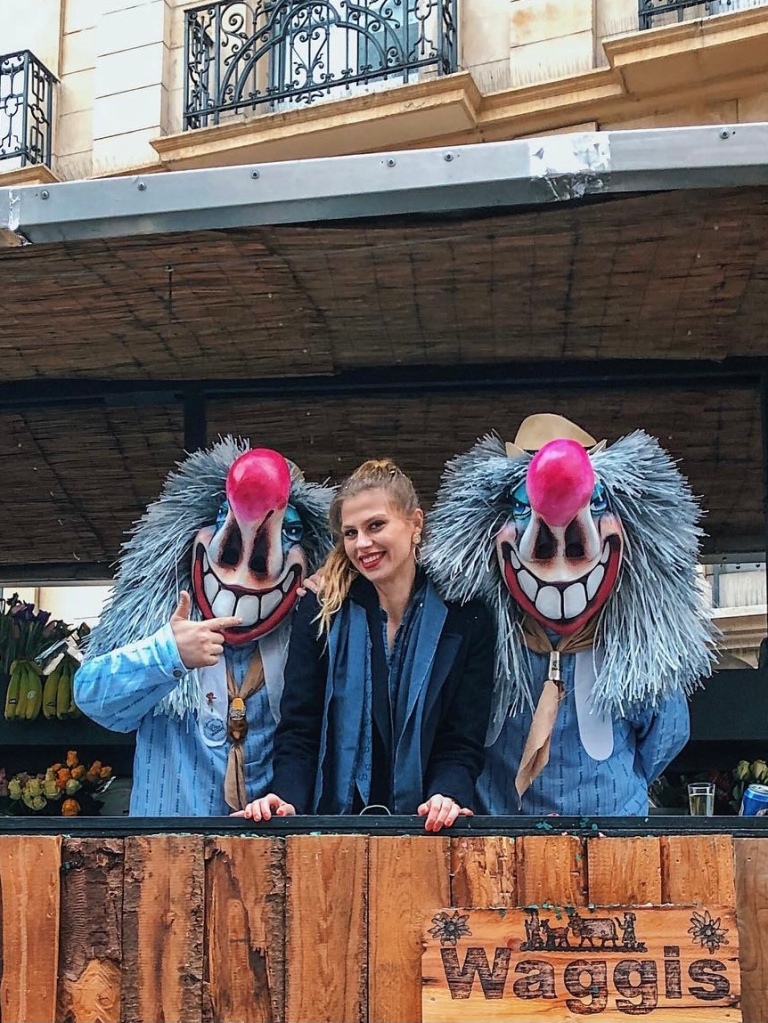
This blogpost was written in collaboration with Basel Tourism. For more information about the Fasnacht click HERE.
